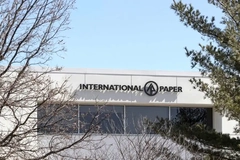Innovative packaging--a big plus for the freezer cabinet

Multilayer films made from BASF plastics protect sensitive foods.
25/01/06
The Story
Whether it’s smoked salmon for festive occasions or cold cuts and cheese slices for the hastily laid breakfast table – more than 90 per cent of all foods reach the consumer in packaged form. The majority of these wrappings are made from plastics that offer numerous advantages. For example, packaging should be tough enough to withstand damage in a full shopping bag yet still be easy to open. Since many of today’s consumers don’t often have the opportunity to go shopping, it's important for sausage, cheese or fish to stay fresh for as long as possible in its pack, while remaining and also looking appetizing.
The demands placed on packaging materials are accordingly high. They include properties such as strength and flexibility as well as barrier effects against aromas and gases like oxygen, carbon dioxide and water vapor. And because a portion of shrink-wrapped hard smoked sausage is unlikely to attract many purchasers these days, modern packagings are designed not only to keep their contents fresh for prolonged periods, but also to give them an appealing appearance.
How all this is achieved in practice usually remains hidden from the average consumer, yet behind most of these unassuming transparent plastic wrappings we find a surprisingly sophisticated technology. "There is no all-purpose plastic that meets all requirements. Only by combining different materials with specific properties can we achieve the wide range of applications we have become accustomed to", explains Dr. Rolf-Egbert Grützner of BASF Performance Polymers Division. The company headquartered in Ludwigshafen is one of the world's leading plastics manufacturers and supplies polyamides (PA) manufactured from the Ultramid® A, B and C series as one of the main starting materials for producing composite polymer films. These multiple-layer films are increasingly populating the freezer shelves in our supermarkets in a wide range of variants, from olives packaged in plastic bags to a complete selection of cheeses in presentation packs.
The composition of these new composite materials depends completely on the desired properties. In many cases, polyethylene (PE) or polypropylene (PP) serve as the basis of a multilayer film and feature very good flexibility, barrier properties towards water vapor and sealability. Thanks to these properties, PE films have a long history of successful household use as cling film for wrapping food. If the requirements are more exacting, however, a combination with polyamides is often preferred. Because PA has what PE and PP don't: Polyamides are simultaneously tough and flexible, retain oxygen and carbon dioxide and retain their shape well even at elevated temperatures. Depending on the intended use, these basic materials are supplemented by barrier substances such as ethylene vinyl alcohol (EVOH), bonding agents and adhesives that join the different layers together. And to make sure that the whole thing looks good as well, the outside can be printed with attractive designs or given with surface coating of aluminium to protect the contents against light.
One typical application of these composite materials is seen in the now highly popular dish-style packs used to present sausage and cheese slices in an attractive display pattern. While the tough, thermoformed lower tray can be made, for example, from a layer of polypropylene and polyamide joined by a bonding agent, the flexible, peelable and often resealable film cover often consists of a combination of polyethylene and BOPA, a much more high-performance polyamide, such as BASF Ultramid® B. "The abbreviation stands for biaxially oriented polyamide, in other words PA films in which the molecule chains of the polymer are aligned in a highly organized manner", explains Grützner. Because of its extremely high tear resistance, BOPA film can be much thinner yet still provide the required strength. "Without innovations like BOPA it would be impossible to satisfy the constantly growing consumer and industry demands", emphasizes the BASF plastics expert.
The new generation of durable packaging materials is ideal for use in combination with an advanced packaging technology such as "modified atmosphere packaging" (MAP). With this technique, the surrounding air is displaced by a defined protective atmosphere chosen to suit the food being packaged and consisting, for example, of nitrogen or other inert gases or mixtures of nitrogen and carbon dioxide. The modified gas composition slows down oxidative processes and the growth of microorganisms, which substantially prolongs the product's shelf-life – and all without using preservatives. But the packaging material must maintain an effective barrier towards gas over the required time period, otherwise the protective atmosphere would rapidly escape again.
Despite the ingenious technology behind many of today's unobtrusive sausage packs, it accounts for only a small part of the product sales price. And the use of smaller film thicknesses with the resulting savings on material not only provides economic benefits for the company: an ecoefficiency analysis performed by BASF has proved that MAP packs made of composite films offer distinct advantages both in eco-friendliness and economic efficiency compared to traditional materials such as glass, tin cans or the coated paper such as used by your high street butcher.
The Prospects
Not only the benefits mentioned so far, but also changes in our contemporary lifestyle, such as the increasing number of single-person households, lack of time available to prepare meals, or much longer shelf-life cycles will be stimulating this market to further growth. Flexible plastic packs account for about 26 per cent of the more than 3,200 billion packaging units traded worldwide every year. Anticipated growth in this market is within the range of 2 to 4 per cent.
The Info Box
They keep the lid on – multilayer films of PE, PP and PA
The multilayer films used for many food packaging units are transparent. After all, people like to see what they are buying. But what they are made from is crystal clear as well. A label on the back or a stamp inform the purchaser what plastics the film contains. But what do the abbreviations PE, PP and PA stand for and what functions do they perform?
PE – polyethylene
is at present used mainly for films and containers. It is absolutely impermeable to water vapor, but allows other gases like oxygen or carbon dioxide to pass through. It is practically resistant to acids, alkalis and other chemicals. PE is the world's most widely produced plastic and accounts for almost 30 per cent of global production.
PP – polypropylene
is a close relative of PE: it also consists essentially of only carbon and hydrogen. The properties of PP resemble those of PE but it is much harder and tougher, although more brittle than its close relation.
PA – polyamides
have a more complex structure, as they contain not only carbon and hydrogen but also oxygen and nitrogen. Their great role model is nature itself. What has proved successful in nature as a versatile building material for hair, muscles and enzymes also does good service in the industrial sphere – not least in stockings made of nylon fibers which have now been a popular worldwide commodity for about 60 years. Polyamides have a wide range of properties qualifying them for use in multilayer films, mainly as a barrier against oxygen and chemicals, and because of their high strength even at elevated temperatures.











